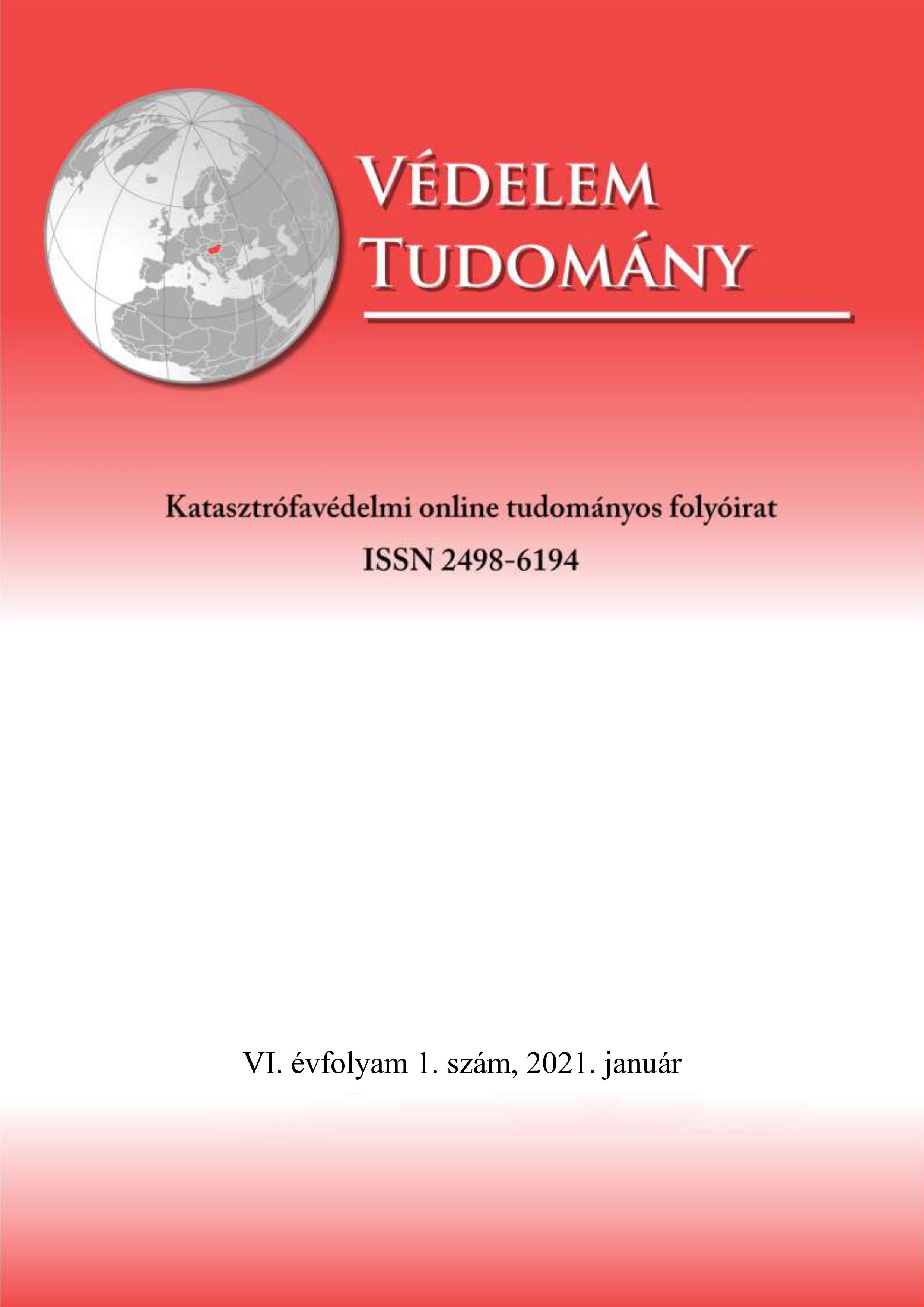Okos épületek, okos városok tűzvédelmének alapjai I.
Absztrakt
Napjainkban a tűzvédelemi tervezés, a tűzvédelem hatósági-, szakhatósági eljárásai virtuális térben zajlanak. Az ügyintézés jellemzően elektronikus úton történik, amely a digitális állam keretében, e-közigazgatás formájában megy végbe. Az eljárások azonban statikus elemekből állnak, és bár alkalmazzák a technika vívmányait, nem élnek az azokban rejlő lehetőségekkel. A közleményben elemezzük a komplex tűzvédelem valamennyi szereplőjének a digitális állam keretében, e-közigazgatás útján történő virtuális térben, valós időben történő integrálását. Ennek elérése érdekében szükséges a BIM alapú, innovatív mérnöki módszerekkel létre hozott dinamikus tűzvédelmi projektek alkalmazásának módszerét kidolgozni, eszközrendszerét meghatározni, amelyek által okos épületek összességeként, okos városok létrehozása valósítható meg tűzvédelmi téren. A kutatásban a szerzők megvizsgálták és bemutatják a hazai tűzvédelmi hatósági- és szakhatósági eljárások rendjét, az e-közigazgatás vonatkozó rendszereit. Elemeztük az innovatív mérnöki módszerekkel létrehozott okos épületek tűzbiztonságának innovatív rendszerekben rejlő lehetőségeit, a tűzvédelmi háló kifejlesztésének módját.
Hivatkozások
Simai M.: Civilizációk és civil társadalmak a 21. század elején, Magyar Tudomány, A Magyar Tudományos Akadémia Folyóirata, XLVII., 2002/6. pp. 738-747.
Muhoray Á.: Katasztrófavédelem I., Budapest, 2016., pp. 24-126.
Mógor J.: Katasztrófavédelem, Budapest, 2009., pp. 398., ISBN: 978963295019
Haig Zs.-Kovács L.-Munk S.-Ványa L., Szerk.: Kovács L., Szerk.: Tózsa I.: Az infokommunikációs technológia hatása a hadtudományokra, Budapest: Nemzeti Közszolgálati Egyetem, 173 p.
Érces G.: Katasztrófavédelmi háló, Rendvédelem Tudományos Folyóirat (on-line), VII.
(2018), pp. 68-102. http://www.bm-tt.hu/assets/letolt/folyoi/2018_1.pdf
Érces G.: Tűzvédelmi háló, Védelem Tudomány 1:(2) pp. 472-496. (2016), http://www.vedelemtudomany.hu/articles/03-erces.pdf
http://digitalismagyarorszag.kormany.hu/europai-digitalis-menetrend (A letöltés dátuma: 2017. 09.18.)
http://www.kormany.hu/download/0/05/50000/E-k%C3%B6zigazgat%C3%A1si_keretrendszer_koncepci%C3%B3.pdf (A letöltés dátuma: 2017. 09. 20.)
http://www.katasztrofavedelem.hu/index2.php?pageid=tuzmegelozes_tmstatisztika_2017 (A letöltés dátuma: 2018. 07.22.)
Érces G. – Restás Á.: Infocommunication Based Development Opportunities in the System of Complex Fire Protection, In: Branko Savić, Verica Milanko, Mirjana Laban, Eva Mračkova, Restás Ágoston, Branka Petrović (szerk.) Book of Preceedings: МЕЂУНАРОДНА НАУЧНА КОНФЕРЕНЦИЈА БЕЗБЕДНОСНИ ИНЖЕЊЕРИНГ. 530 p., ISBN:978-86-6211-106-7
Kátai-Urbán I., Bleszity J.: Veszélyes tevékenységek nemzeti kockázatai, Bolyai Szemle XXIII. évf. 2. 2014. pp. 112-118.
Kreider, R. G., Messner, J. I.: The Uses of BIM: Classifying and selecting BIM Uses, The Pennsylvania State University, University Park, PA., USA., 2013, http://www.bim.psu.edu (A letöltés dátuma: 2018. augusztus 23.)
Fritts M.: A BIM jövője, http://mabim.hu/a-bim-jovoje/ (A letöltés dátuma: 2016. 04. 30.)




